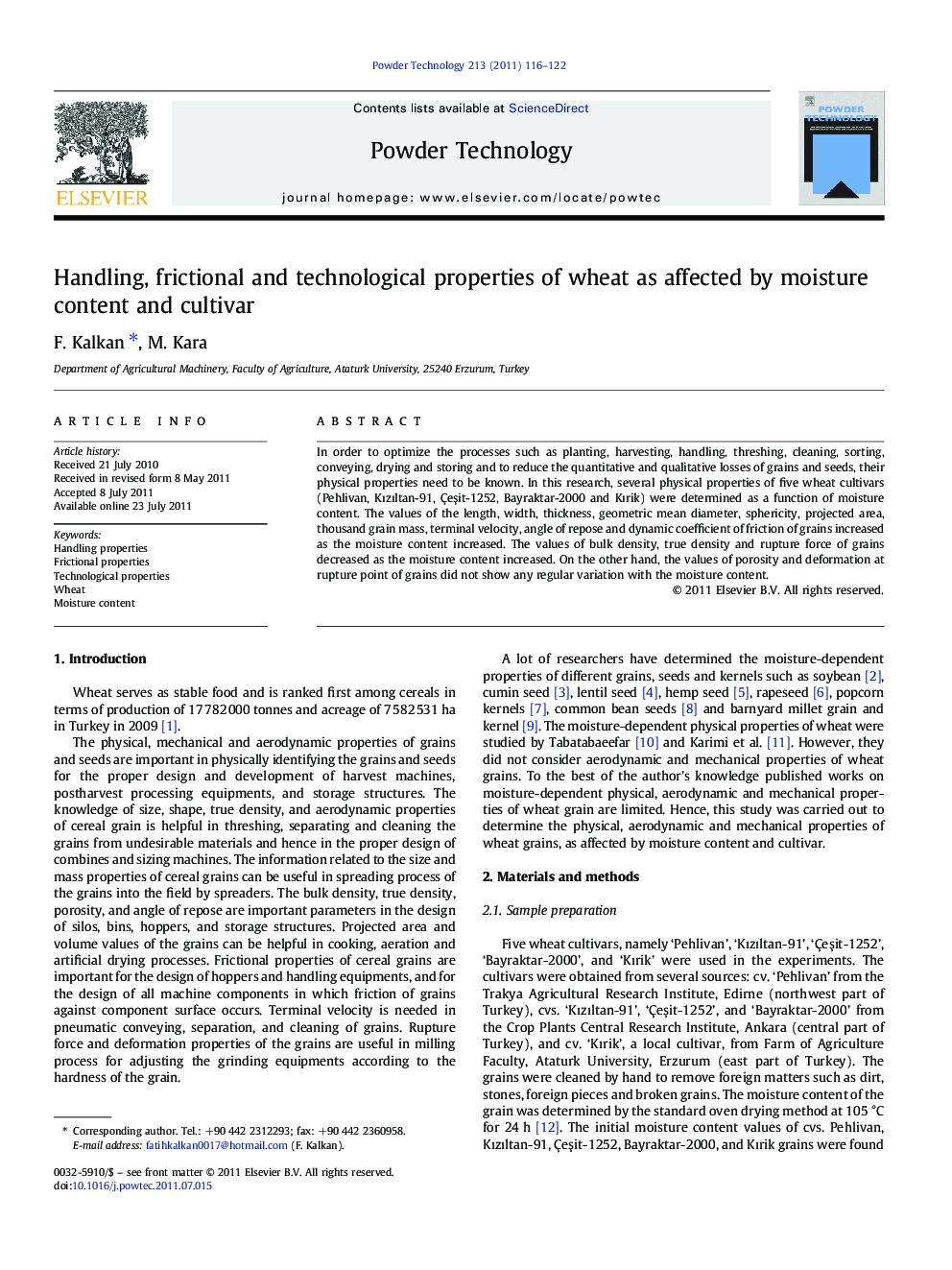| Article ID | Journal | Published Year | Pages | File Type |
|---|---|---|---|---|
| 237464 | Powder Technology | 2011 | 7 Pages |
In order to optimize the processes such as planting, harvesting, handling, threshing, cleaning, sorting, conveying, drying and storing and to reduce the quantitative and qualitative losses of grains and seeds, their physical properties need to be known. In this research, several physical properties of five wheat cultivars (Pehlivan, Kızıltan-91, Çeşit-1252, Bayraktar-2000 and Kırik) were determined as a function of moisture content. The values of the length, width, thickness, geometric mean diameter, sphericity, projected area, thousand grain mass, terminal velocity, angle of repose and dynamic coefficient of friction of grains increased as the moisture content increased. The values of bulk density, true density and rupture force of grains decreased as the moisture content increased. On the other hand, the values of porosity and deformation at rupture point of grains did not show any regular variation with the moisture content.
Graphical abstractWhile length, width, thickness, geometric mean diameter, sphericity, projected area, thousand grain mass, terminal velocity, angle of repose and dynamic coefficient of friction of grains increased as the moisture content increased, bulk density, true density and rupture force of grains decreased. Porosity and deformation at rupture point of grains haven't generally shown regular variation depending on the moisture content.Figure optionsDownload full-size imageDownload as PowerPoint slideHighlights► We determine several physical properties of five wheat cultivars as a function of moisture content. ► Increasing in moisture content of cultivars is effective on the physical properties of cultivars. ► The knowledge of physical properties of wheat cultivars as a function of moisture content is fundamental. ► Because it facilitates design and development of harvest machines, postharvest processing equipments and storage structures.
